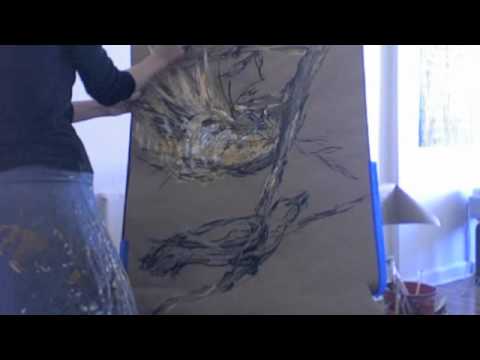In the early 1900’s artist Pablo Picasso painted a portrait of Gertrude Stein, a famous American poet and writer. The woman was not particularly attractive by any standard, but her face was highly recognizable in her day. Anyone knowing Picasso’s work at all knows his work is extremely abstract, yet his portrait of Stein was actually more recognizable than an actual picture. Picasso took her most distinctive features, her heavy, lidded eyes and long, aquiline nose and exaggerated them. Through careful distortion, he found a way to intensify reality. As Picasso put it, “Art is the lie that reveals the truth.”
It is amazing, but sometimes our brains are able to interpret what we look at when it is distorted easier than we can a photograph, especially when a master, such as Picasso, does it. Research has found that we are able to look at a cartoon (parody) of a person, such as former President Richard Nixon, and recognize him right away. This is because the area of the brain involved in facial recognition, the fusiform gyrus, responds more eagerly to caricatures than to real faces. Cartoons tend to emphasize the features that we associate as distinctive on each face, and therefore help us to make the distinction between one face and another. Scientists call this the “peak-shift effect,” which can turn a work of art or a political cartoon into a mental stimulus.
“Neuroaesthetics” is the term used to refer to the studying of art through studying the brain and how it understands and interprets what we see. It is a very new area of neuroscience dealing with perception. Neuroaesthetics is an attempt by neuroscientists to combine their research of the brain and it’s functions by experiencing art and the different mental states the brain goes through in order to form judgments or to create works of art.
Each of us has our own taste as far as art. We form our tastes through the perceptions our brains receive. Assigning different degrees of beauty to certain shapes, colors and movement is a human trait. Neuroscientists believe that specific brain circuitry is involved in order to get a response to what we see and how we perceive it.
Semir Zeki, a neuroscientist at University College London, likes to say, “Art is governed by the laws of the brain.” “It is brains,” he says, “that see art and it is brains that make art.” Those who are involved in this area of neuroscience get a lot of grief from “scholars” who say this is not science but culture. Those who study in the field believe the brain is involved with everything we do, and investigating art in neurology is simply a natural progression into learning how a brain connects to appreciate art and culture.
As scientists explore more areas of the brain there will be more and more fields that will spring up along the way. Visual art, visual perception and creativity are all a part of processing of information through the senses and to the brain. There is a bridge of communication that exists, just like understanding how music is processed, and scientists are branching out to discover new worlds.
Bran scanning techniques are getting more precise, so researchers are able to see that the way we perceive outside forms can reveal something about our brain’s internal physiology. For example: When we look around us we see things seamlessly, despite the knowledge that we have a “blind spot” where the optic nerve leaves our eyes and there is no photoreceptors to get the image. The only time we are really aware of a blind spot is when we are driving a car and have not adjusted our mirrors correctly. The seamless perception is our mind filling in the blind spots so we see things seamlessly. It predicts the world around us that it cannot actually visualize.
Scientists believe that our vision is our most important sense. It is estimated that 90% of the information our brain processes comes from what we see. Yet, what we usually see is a generalized view of what actually is within our frame of reference. An artist “speaks to our blind spot, predicting what we will perceive. They want to capture things we would not normally see with our eyes. Think about it. Look ahead of your for just an instant. What do you see? Now, look in front of you for a full minute. Now what do you see? Your eyes are taking in a flash shot at the beginning, but when you take a longer look you can see dozens of things you missed.
Art is a brain development tool. It not only expands the horizons of the adults and children you study it, it allows the mind to expand. “Art and music are essential in expanding the horizons of children beyond the everyday, and children that are exposed to art and music early on are known to do better and go farther in life than they would have without it. Introducing the arts in the form of games is a great way to start them out with a love for art and music.”
————
About the author:
Ron White is a two-time U.S.A. Memory Champion and memory training expert. As a memory keynote speaker he travels the world to speak before large groups or small company seminars, demonstrating his memory skills and teaching others how to improve their memory, and how important a good memory is in all phases of your life. His CDs and memory products are also available online at BrainAthlete.com.
———-
Sources:
Mental Fitness Cards, by Marge Engleman (82-83)
The Beautiful Brain — A Response to Alva Noë “Art and the Limits of Neuroscience” : http://thebeautifulbrain.com/2011/12/response-to-alva-noe-art-and-the-limits-of-neuroscience/
Learning Games for Kids.com – http://www.learninggamesforkids.com/art_and_music_games.html
The Beautiful Brain — The Art Brains Make and See: http://thebeautifulbrain.com/2011/11/the-art-brains-make-and-see/
Psychology Today — Unlocking the Mysteries of the Artistic Mind: http://www.psychologytoday.com/articles/200907/unlocking-the-mysteries-the-artistic-mind
Wikipedia — Neuroesthetics: http://en.wikipedia.org/wiki/Neuroesthetics


